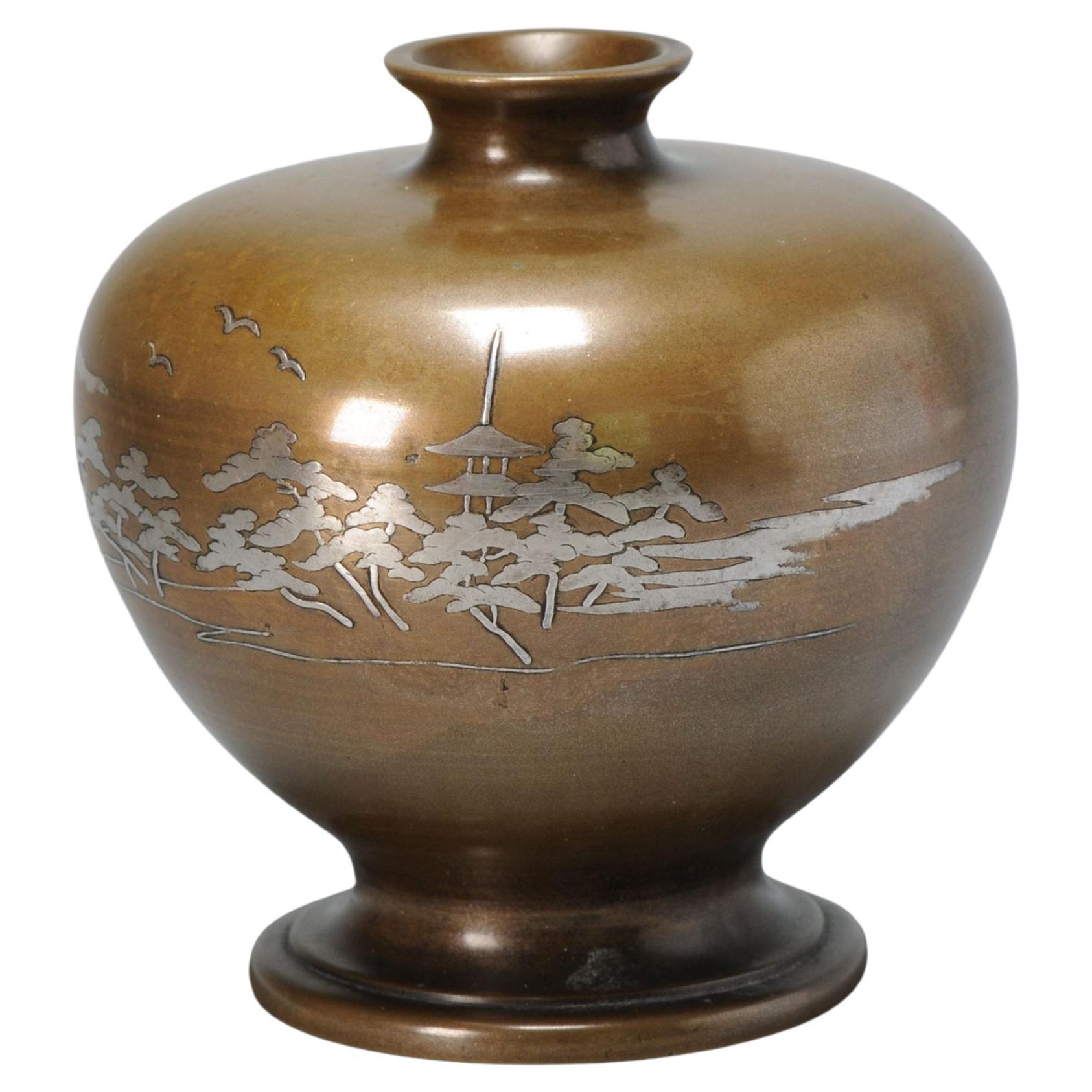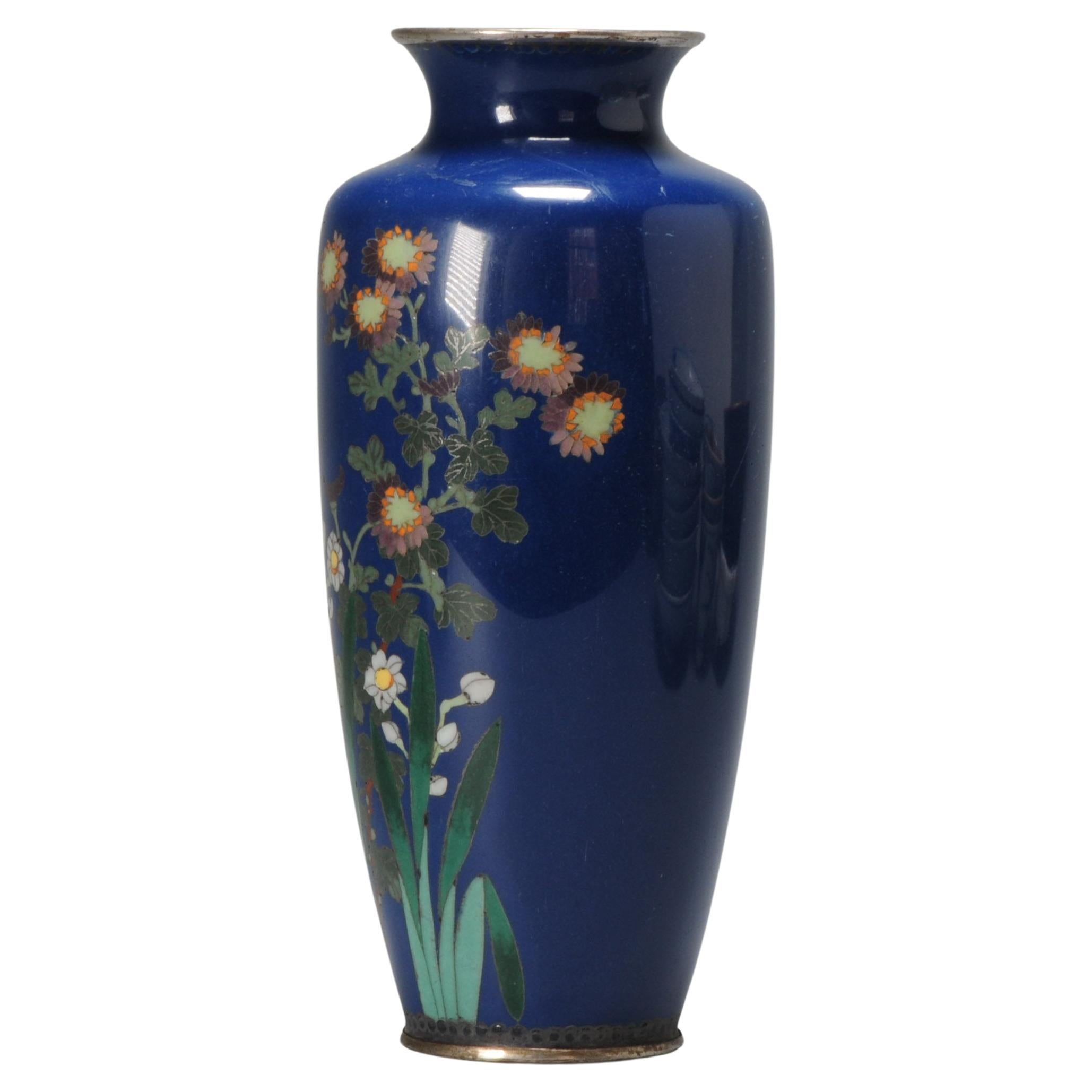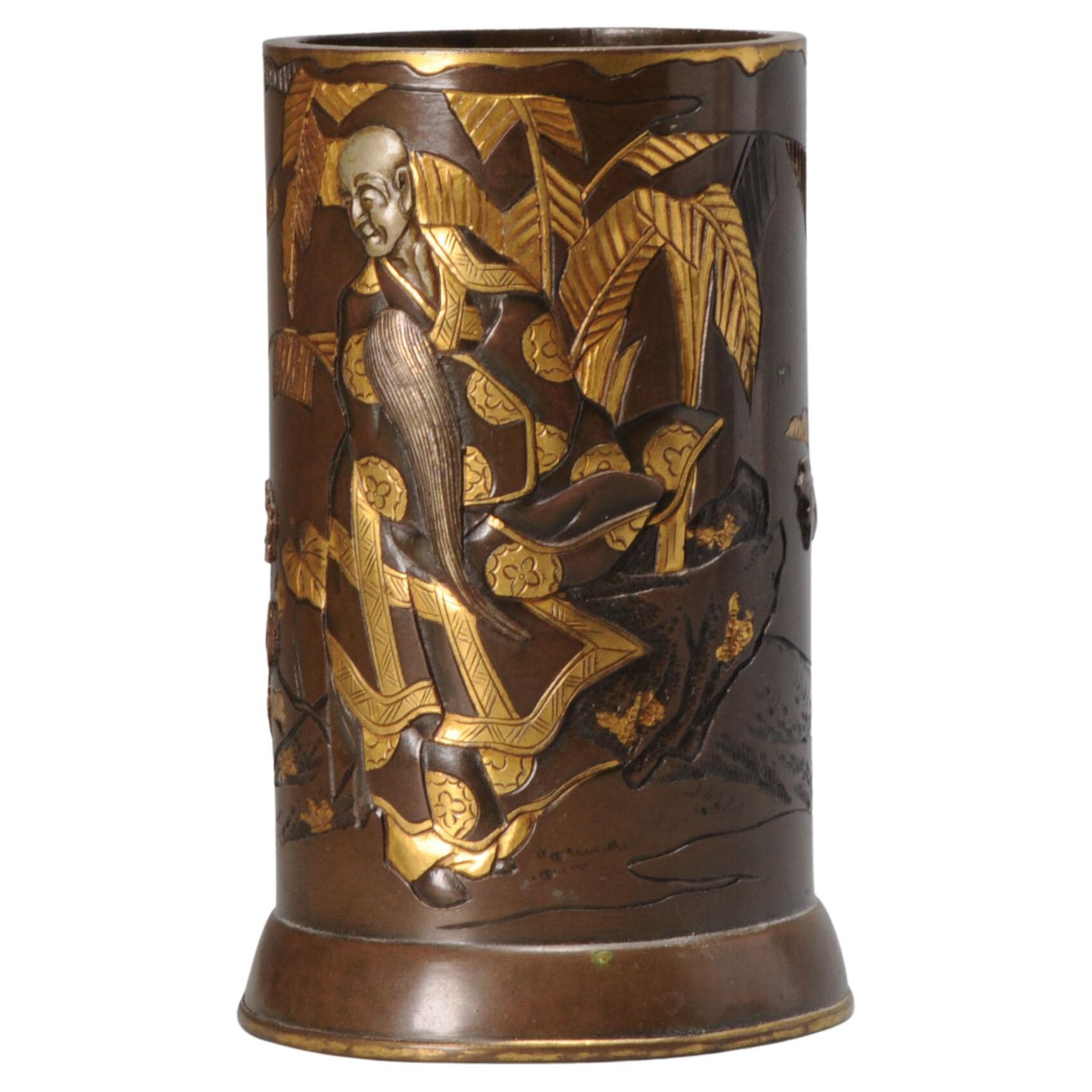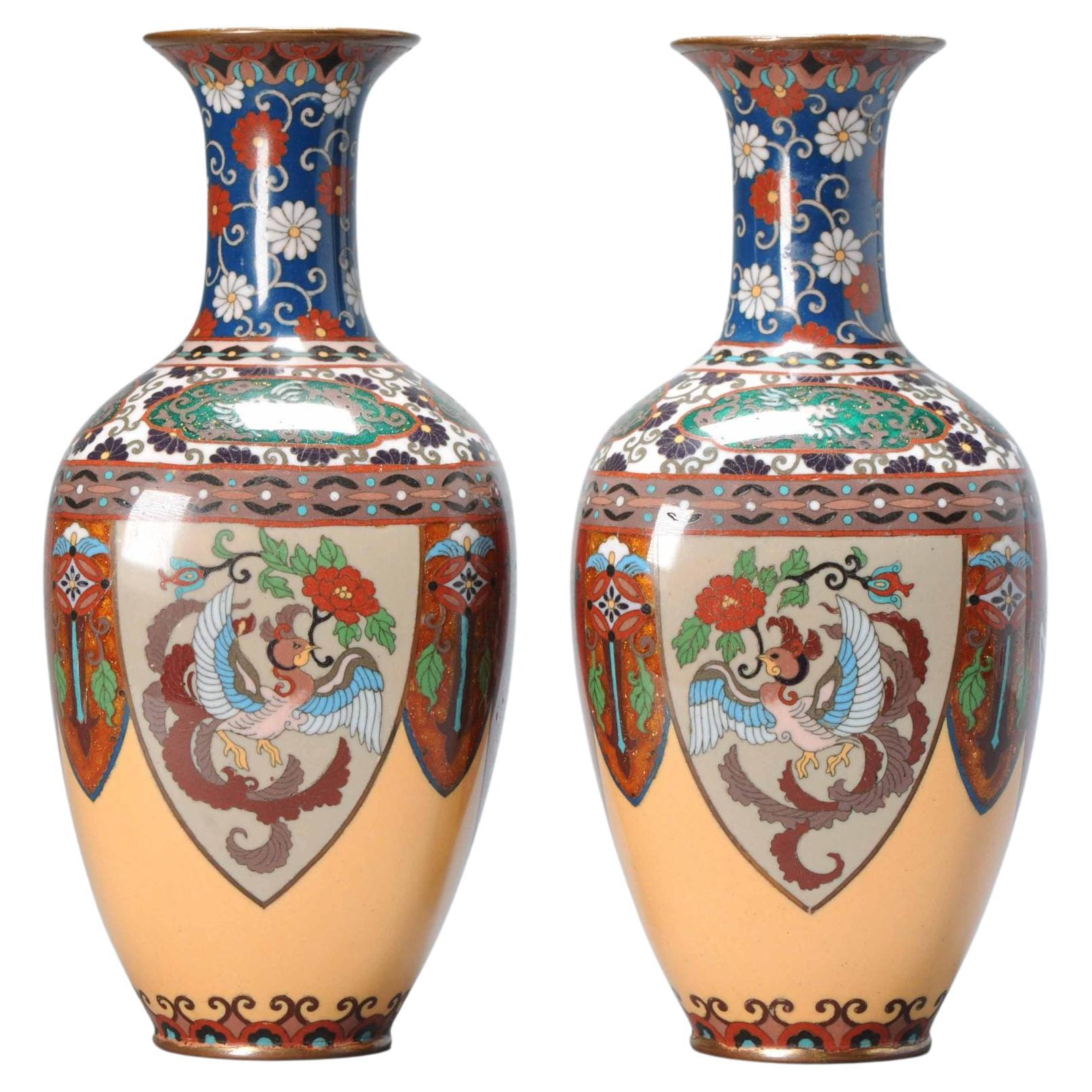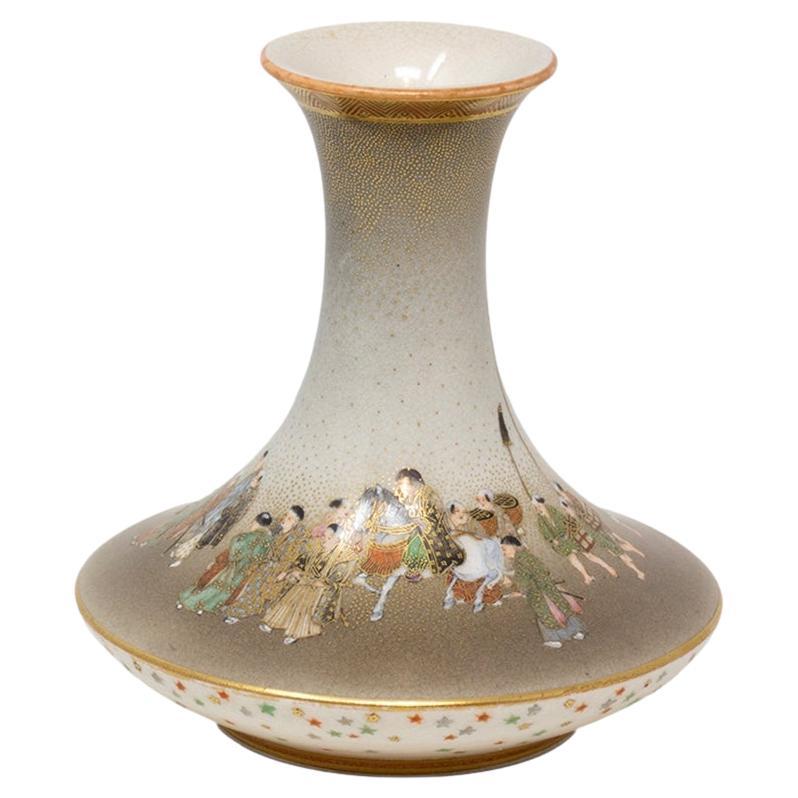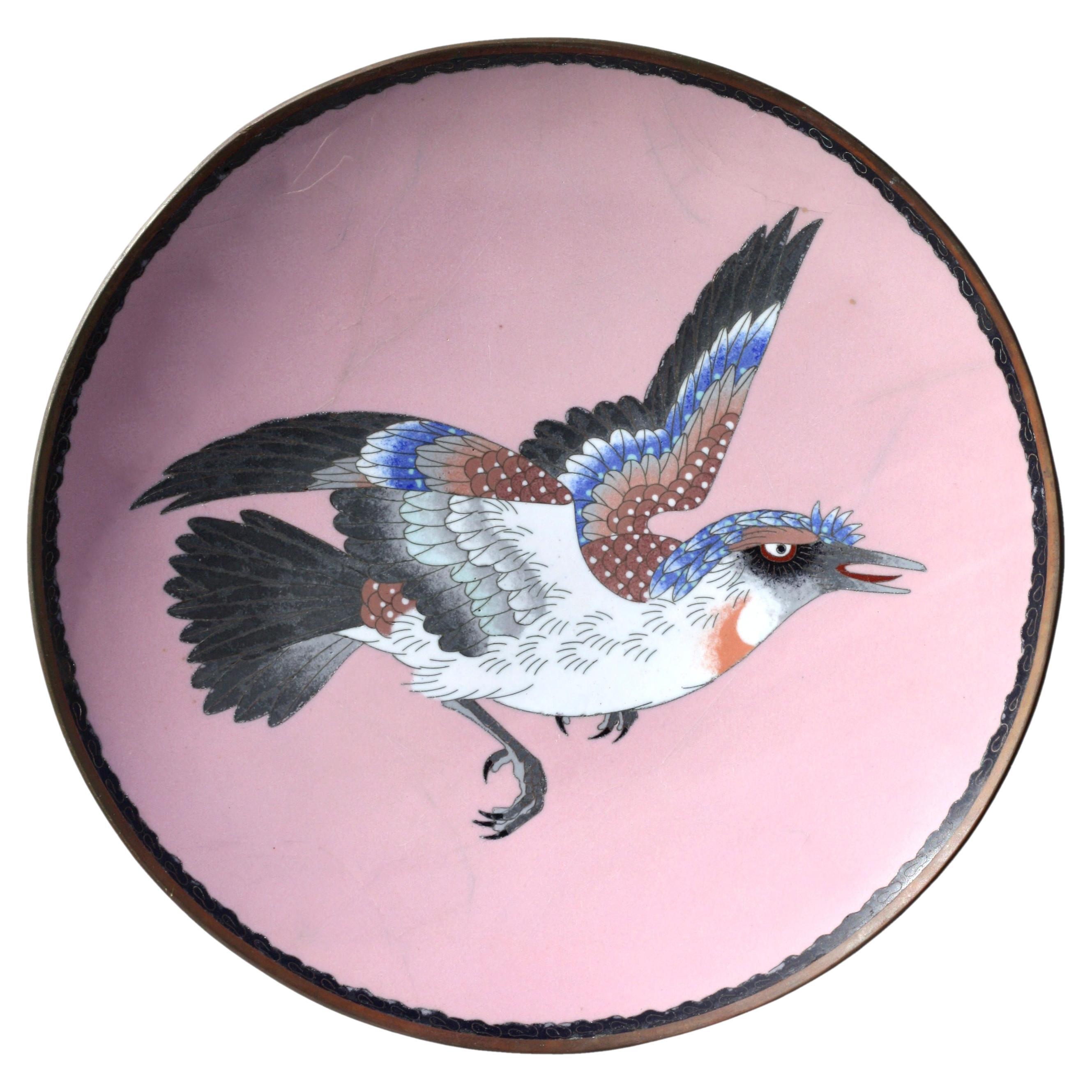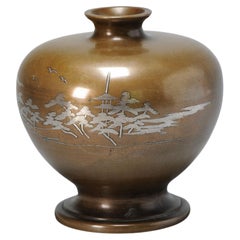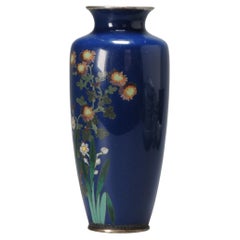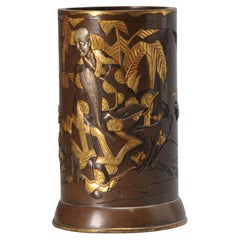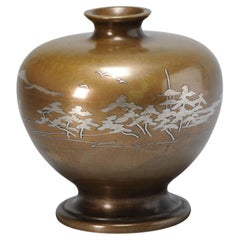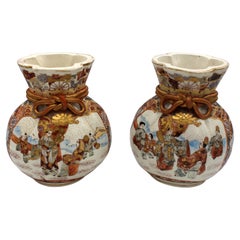Items Similar to Inlaid Shibuichi Vase in Flower Shape Cranes, Meiji '1868-1912' Era, Early
Want more images or videos?
Request additional images or videos from the seller
1 of 10
Inlaid Shibuichi Vase in Flower Shape Cranes, Meiji '1868-1912' Era, Early
About the Item
The scalloped vase (shape of a flower) inlaid with cranes on the waterfront. Beautiful craftmenship.
Unmarked.
Perfect condition. Size 120mm high
Period
20th century Meiji Periode (1867-1912)
Taisho Periode (1912-1926).
- Dimensions:Height: 4.73 in (12 cm)Diameter: 0.04 in (1 mm)
- Style:Qing (Of the Period)
- Materials and Techniques:
- Place of Origin:
- Period:
- Date of Manufacture:19th Century
- Condition:Wear consistent with age and use. Minor losses.
- Seller Location:Amsterdam, NL
- Reference Number:1stDibs: LU4863233264972
About the Seller
5.0
Platinum Seller
Premium sellers with a 4.7+ rating and 24-hour response times
Established in 2015
1stDibs seller since 2019
236 sales on 1stDibs
Typical response time: 1 hour
- ShippingRetrieving quote...Shipping from: Amsterdam, Netherlands
- Return Policy
Authenticity Guarantee
In the unlikely event there’s an issue with an item’s authenticity, contact us within 1 year for a full refund. DetailsMoney-Back Guarantee
If your item is not as described, is damaged in transit, or does not arrive, contact us within 7 days for a full refund. Details24-Hour Cancellation
You have a 24-hour grace period in which to reconsider your purchase, with no questions asked.Vetted Professional Sellers
Our world-class sellers must adhere to strict standards for service and quality, maintaining the integrity of our listings.Price-Match Guarantee
If you find that a seller listed the same item for a lower price elsewhere, we’ll match it.Trusted Global Delivery
Our best-in-class carrier network provides specialized shipping options worldwide, including custom delivery.More From This Seller
View AllInlaid Shibuichi Vase in Lovely Shape, Landscape, Meiji Era
Located in Amsterdam, Noord Holland
Japan, silver inlaid bronze vase, Meiji period (1868-1912), the bulbous vase inlaid with a temple in a landscape,
28-6-22-1-12
Condition
no real damages found, just a small pr...
Category
Antique 19th Century Japanese Qing Ceramics
Materials
Porcelain
$2,507 Sale Price
20% Off
Small Vase with Flowers on Blue Cloisonné Enamel Meiji Era '1868-1912'
Located in Amsterdam, Noord Holland
Top quality
Meiji era (1868-1912), 19th century
Interesting article about Japanese Cloisonne can be found here;
Condition
Some usage signs, all pictured. Size 183mm high
Per...
Category
Antique 19th Century Japanese Qing Ceramics
Materials
Porcelain
$1,207 Sale Price
20% Off
Inlaid Shibuichi Bitong / Vase in Lovely Shape, Landscape, Meiji 19th C
Located in Amsterdam, Noord Holland
Meiji Period (1868-1912), Japan
A small brush pot with an inaid scene of a man standing in a garden. Marked on the base with five impressed characters.
Condition
Very good...
Category
Antique 18th Century Chinese Qing Ceramics
Materials
Porcelain
$3,526 Sale Price
20% Off
Shibuichi Vase in Lovely Shape, Landscape, Meiji (1868-1912) Era, Early 20th C
Located in Amsterdam, Noord Holland
Japan, silver inlaid bronze vase, Meiji period (1868-1912), the bulbous vase inlaid with a temple in a landscape,
Additional information:
Material: Bronze & Cloisonne
Region of Orig...
Category
Early 20th Century Japanese Vases
Materials
Bronze
$1,830 Sale Price
20% Off
Pair of Round Cloisonné Enamel Vases Meiji Era '1868-1912' Dragons
Located in Amsterdam, Noord Holland
Top quality
Meiji era (1868-1912), 19th century
Each vase worked in gilt and wire of varying gauge with a mirrored design.
Condition
Vase one with some missing enamel/glaze spo...
Category
Antique 19th Century Japanese Qing Ceramics
Materials
Porcelain
$1,578 Sale Price
20% Off
Small Vase with Birds Dove Pigeon Cloisonné Enamel Meiji Period '1868-1912'
Located in Amsterdam, Noord Holland
Top quality small vase from the Meiji period. With a nice scene of birds (Doves/Pigeons)
Meiji era (1868-1912), 19th century
Interesting article about Japanese Cloisonne can be...
Category
Antique 19th Century Japanese Qing Ceramics
Materials
Porcelain
$1,578 Sale Price
20% Off
You May Also Like
Japanese Meiji Period (1868-1912) Satsuma Vase by Kinkozan
By Kinkozan
Located in Newark, England
JAPANESE SATSUMA PROCESSIONAL VASE
From our Japanese collection, we are delighted to introduce to the market this Japanese Satsuma Vase by Kinkozan. The vase with a compressed body ...
Category
Antique Late 19th Century Japanese Meiji Ceramics
Materials
Ceramic, Earthenware, Pottery
A Cloisonné Dish Meiji period (1868-1912)
Located in West Palm Beach, FL
A Cloisonne Dish
Meiji period (1868-1912)
decorated with a lively Falcon reserved on a light pink ground
diameter 11 3/4 inches
Category
20th Century Ceramics
Materials
Ceramic
1868-1912 Pair of Japanese Meiji Period Kyoto Satsuma Vases
Located in Chapel Hill, NC
1868-1912 Pair of Meiji Period Kyoto Satsuma Vases, Japan. In the form of tied sash bags/pouches. Four major reserve scenes in gardens. Fine gilding & ov...
Category
Antique Late 19th Century Japanese Meiji Ceramics
Materials
Pottery
Japanese Meiji Period (1868-1912) Satsuma Earthenware Vase Taizan for Hattori
Located in Newark, England
Meiji Period (1868-1912)
From our Japanese collection, we are delighted to offer Japanese Meiji Period Satsuma Vases. The Satsuma Vase of hexagonal form with a slight waisted neck and tight rounded rim is extensively decorated with multiple figures to two large scenes. The first scene features a beach with waves to the background and a plethora of figures including multiple geisha holding traditional Japanese wagasa’s. The second scene follows on from the first with a large building in the foreground holding figures on a large platform under a pagoda roof with a pagoda building in the background and further figures in the foreground. The scenes are framed by a full detailed border with gilt shapes, flowers amongst pink shaded backgrounds and butterflies around the neck. The Satsuma Vase is unusually signed Fine Art, Satsuma Ware, Dai Nippon (Great Japan), Hattori Made, Gosuido Works, Taizan Painted. 美術, サツマヤキ(薩摩焼), 大日本, 服部造, 五スイ堂工, 對山画 and dates to the Meiji Period (1868-1912) and the turn of the 20th century circa 1905.
Satsuma ware is a type of earthenware pottery originating from the Satsuma province in Southern Kyushu, Japan’s third largest island.
Wagasa are traditional Japanese umbrellas made of washi paper attached to a bamboo frame and treated to ensure it is waterproof.
Meiji Period was an era of Japanese history that spanned from 1868 to 1912. It was the first half of the Empire of Japan, when the Japanese people began to build a paradigm of a modern, industrialised nation state and emergent great power, influenced by Western countries and aesthetics. As a result of radically different ideas, the changes to Japan were profound and it affected the social structure, politics, economy, military, and foreign relations across the board. The period corresponded to the reign of Emperor Meiji and was preceded by the Keio era and was succeeded by the Taisho era.
Cultural Art during the Meiji Period was of particular interest to the government and they overhauled the art export market which in turn promoted Japanese arts via various world’s fairs, beginning in Vienna at the world fair in 1873. The government heavily funded the fairs and took an active role organising how Japan’s culture was presented to the world including creating a semi-public company named Kiritsu Kosho Kaisha (First Industrial Manufacturing Company). The Kiritsu Kosho Kaisha was used to promote and commercialise exports of Japanese art and established the Hakurankai Jimukyoku (Exhibition Bureau) to maintain quality standards. For the 1876 Centennial International Exhibition in Philadelphia, the Japanese government created a Centennial Office and sent a special envoy to secure space for the 30,000 items that would be displayed. The Imperial Household also took an active interest in arts and crafts, commissioning works by select artists to be given as gifts for foreign dignitaries further emphasising the high quality and importance of Japanese art. Just before the end of the 19th century in 1890, the Teishitsu Gigeiin (Artist to the Imperial Household) system was created to recognise distinguished artists. These artists were selected for their exceptionally high quality wares and talent in their own industry. Over a period of 54 years Seventy artists were appointed, amongst these were ceramicist Makuzu Kozan and cloisonné enamel artist...
Category
Antique Early 1900s Japanese Meiji Ceramics
Materials
Earthenware, Pottery
Antique Pair Japanese Satsuma Hand Painted Vase Urns Meiji Period 1868-1912
Located in Dublin, Ireland
Stunning Pair of early Meiji period Satsuma heavy gauge earthenware Rouleau Japanese Vases of Museum quality and generous proportions. These beautiful Satsuma-ware vases were made du...
Category
Antique 19th Century Japanese Anglo-Japanese Ceramics
Materials
Ceramic, Porcelain
Antique Pair Japanese Satsuma Table Lamps Vases Urns Meiji Period 1868-1912
Located in Dublin, Ireland
Stunning Pair of large early Meiji period Satsuma heavy gauge earthenware four-sided Japanese Vases, now converted to a Pair of Electric Table Lamps. These beautiful Satsuma-ware vas...
Category
Antique 19th Century Japanese Anglo-Japanese Ceramics
Materials
Ceramic, Porcelain
Recently Viewed
View AllMore Ways To Browse
Vase Shapes
Antique Vase Shapes
Inlaid Flower
Asian Cranes
Asian Art With Cranes
Japanese Crane Art
Japanese Art Of Cranes
Crane Vase
Meiji Cranes
Cranes Vase Japanese
Ming Dynasty Wares
Yongzheng Famille Rose
Chinese Temple Dog
Famille Verte Kangxi
Kangxi Bowl
Bird Pomegranate
Chinese Guangxu Porcelain
Kangxi Famille Verte Porcelain
